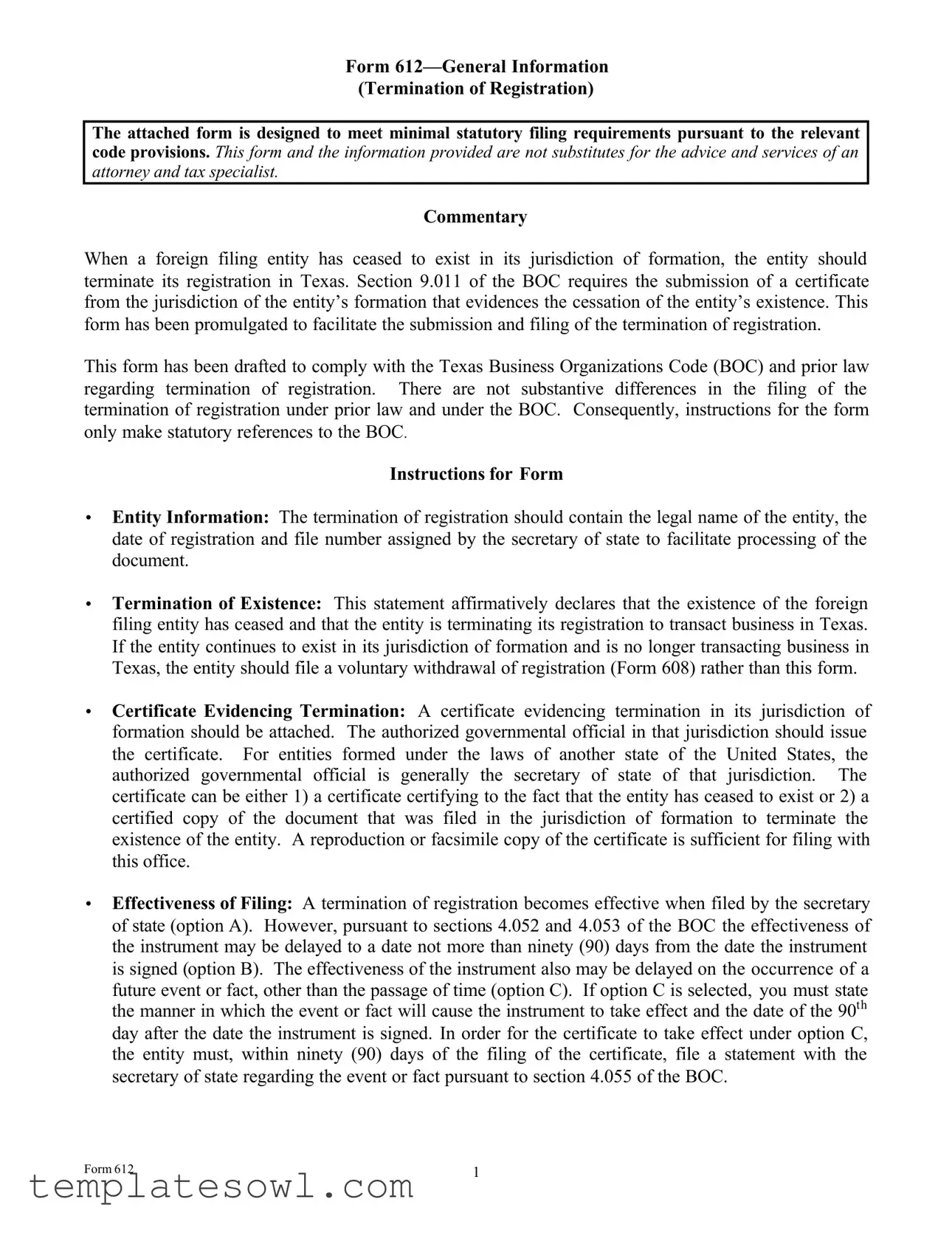What is Form 612 and its purpose?
Form 612 is designed to terminate the registration of a foreign filing entity in Texas when it has ceased to exist in its jurisdiction of formation. The form complies with the Texas Business Organizations Code (BOC) and ensures that minimal statutory filing requirements are met. It formalizes the cessation of business operations in Texas.
When should I use Form 612 instead of Form 608?
You should use Form 612 if the foreign filing entity has completely ceased to exist in its jurisdiction of formation. If the entity continues to exist in its home state but is no longer doing business in Texas, you should use Form 608 to file for a voluntary withdrawal of registration instead.
What documents must accompany Form 612?
Along with Form 612, you must attach a certificate evidencing termination from the jurisdiction of formation. This certificate is typically issued by the secretary of state of that jurisdiction and can either certify that the entity has ceased to exist or be a certified copy of the termination document filed in that state.
How does the effectiveness of the filing work?
The termination of registration becomes effective when filed by the secretary of state. However, you have options for delaying this effectiveness. It can be set to a date not more than ninety days in the future or tied to a specific future event. If you opt for a delayed effectiveness or event condition, further documentation may be required within ninety days post-filing.
Who can sign Form 612?
The form must be signed by an individual authorized to act on behalf of the entity. This is often a member of management or a governing person. Notarization is not necessary for this form, but it is crucial to carefully read the statements on the form before signing.
What is the filing fee for Form 612?
The standard filing fee for Form 612 is $15. However, if the entity is a nonprofit corporation or cooperative association, the fee is reduced to $5. Payment can be made via several methods, including personal checks and credit cards, with potential convenience fees for card payments.
How should I submit Form 612?
You can submit the completed Form 612 in duplicate via mail, fax, or in person. You may mail it to P.O. Box 13697, Austin, Texas 78711-3697, or fax it to (512) 463-5709. If submitting in person, you can bring it to the James Earl Rudder Office Building in Austin.
What happens after I file Form 612?
Once the document is filed, the secretary of state will update their records to reflect the termination status. You will receive evidence of filing along with a file-stamped copy of your submitted documents if you provided a duplicate. Keep this documentation for your records as it confirms the termination of your entity's registration.




 Attached hereto is a certificate from an authorized governmental official of the entity’s jurisdiction of formation evidencing the termination of the entity’s existence or separate existence.
Attached hereto is a certificate from an authorized governmental official of the entity’s jurisdiction of formation evidencing the termination of the entity’s existence or separate existence.